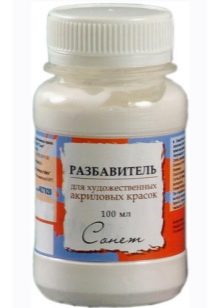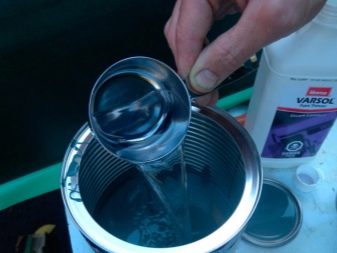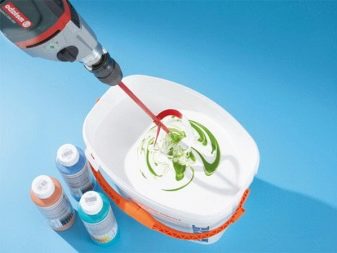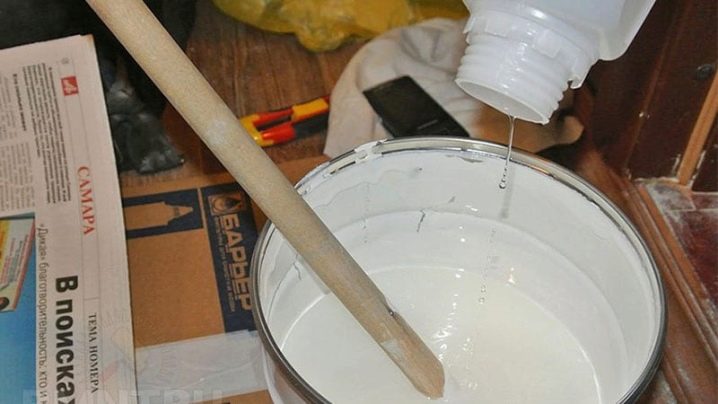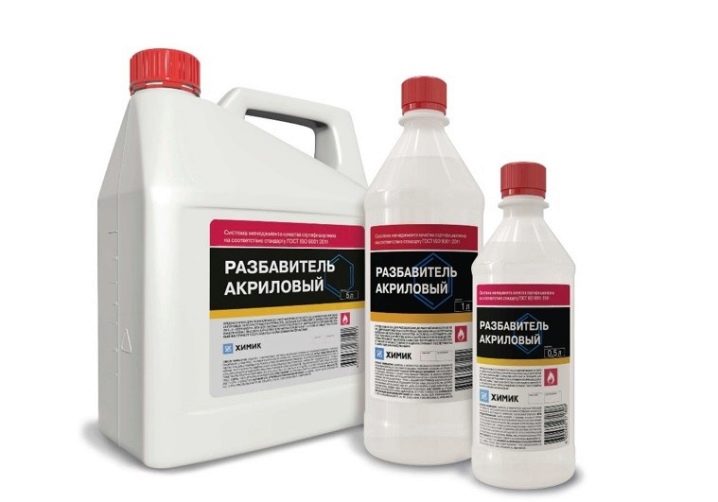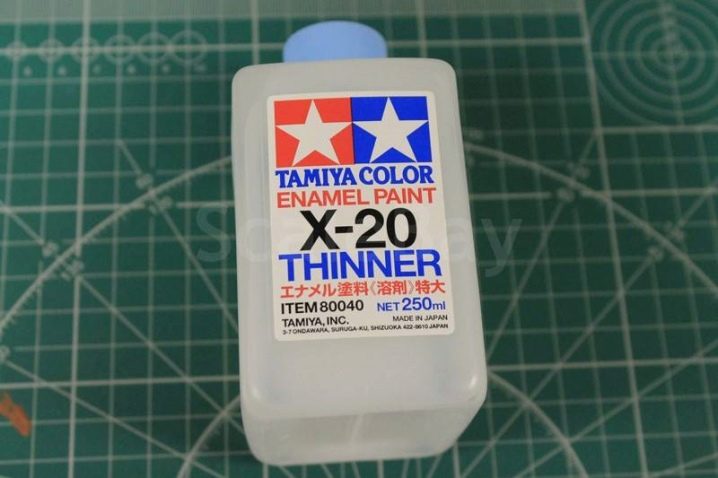How to use thinner for acrylic paints?
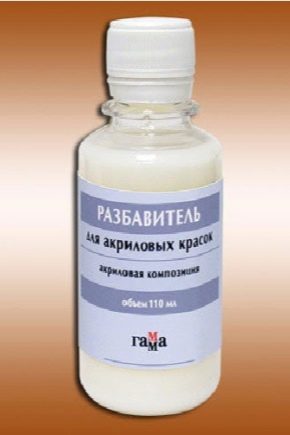
Acrylic paints are widely used today among paintwork materials. Their components are water, color pigment and binders. The surface dries quickly and has a number of useful properties. If the prepared volume of paint is not used immediately, there is a need for thinners. Select and apply them must be particularly careful.
Special features
Acrylic paint thinner is often confused with its solvent. Errors in the use of these substances will not achieve the desired effect. Solvent mixtures are designed to make the hardened paint softer, to simplify its removal from the surface.Coating properties inevitably deteriorate with time, drying time increases. Thinners for acrylic paints are designed to affect the density of the dye, they speed up the drying process and increase the practical qualities of the dye, sometimes increase the color saturation. Often diluents and solvents are confused even by professional traders.
It is necessary to carefully study the label, instructions and accompanying documents.
What to dilute?
Since water is a part of acrylic paints, it is acceptable to add water in small portions. However, it is necessary to take only pure water and does not contain any extraneous components. Dried paint is diluted with construction mixers in a special container. When it is intended to use the entire mixture at once, it is diluted in the original container. The liquid is poured in small portions, otherwise the paintwork material may become too liquid.
We'll have to put up with the weakening of the saturation of the color or enter into the paintwork additional portions of the pigment.
An alternative is to use a diluent: Today such mixtures are produced in a wide range. Coverage when using them becomes better, dries faster.Depending on the type of thinner, it may take on matte or glossy shades. Diluents have a pronounced odor, but it passes easily as soon as the mixture dries.
How to dilute with water?
Before starting work, you should find out if the liquid is clean. Use hot water to dilute the paint is absolutely unacceptable.
Consider the typical proportions used by experts:
- 1: 1 - when you need to prepare the base layer (moderately thick and evenly fit);
- 1: 2 - when you need a texture that does not spread and is conveniently typed on brushes or rollers (gives a thin layer of paint);
- 1: 5 - the original color is almost lost, so you need to enter large portions of pigment (such a mixture should be applied on shaped and shallow surfaces);
- 1:15 - this dilution helps to create a feeling of a diffuse color shift between full paint in different places.
How to use thinners?
For both artistic and construction purposes, acrylic paints are diluted using approximately the same technology. When the air temperature is low, the paint itself does not hold up well on the surface, a thinner will help to correct the situation.It is necessary to apply compositions of a universal series when carry out works in rooms with a room temperature. Drugs that are characterized by a low evaporation rate, allow you to apply the coloring composition with significant heat.
Storage of the diluent should be subject to the instructions. The container is closed with a lid as tightly as possible and placed vertically in a dark, cool place.
Acrylic Thinner "Chemist" can be used for breeding automotive enamels with a pearl and metallic effect. With it, it is easy to remove acrylic dirt from the surface of the painting tool.
Diluent Tamiya effectively copes with a variety of acrylic based paints. It is much better than conventional solvents. This composition not only helps to dilute the dye without loss of quality, but also safer for health. Fully hardened paint, stuck together in a thick lump, is easier to throw away: it will not give any benefit.
In the following video you will learn how to dilute acrylic paints for airbrush.



